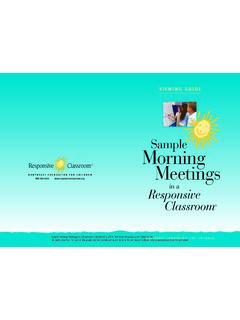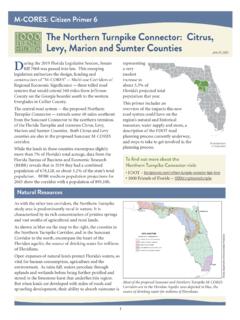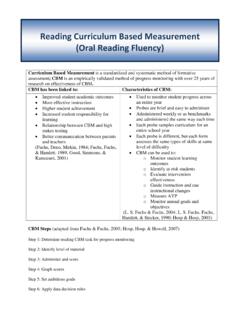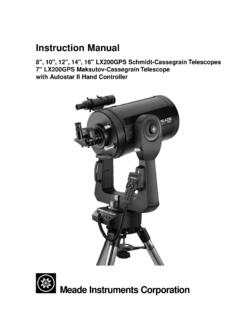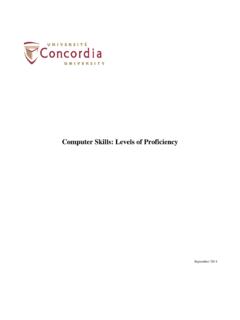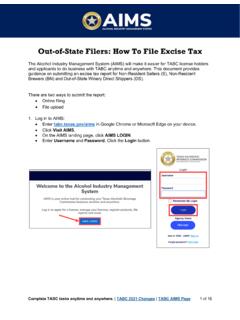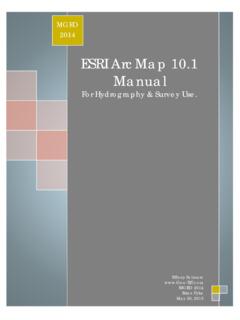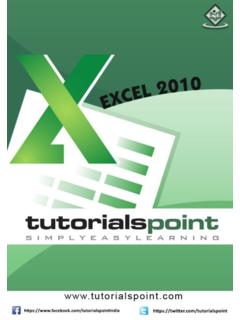Transcription of Evaluating Prototypes P - Tamarack Institute
1 1 Evaluating PrototypesPrototyping is a fast, low-cost, low-risk, learning-rich approach to surface and test promising responses to tough challenges. The approach originated in the technical fields of engineering, software design, and manu-facturing, and has since spread to the arena of social inno-vation where diverse groups are experimenting with new ways to tackle vexing social and environmental precedes, rather than replaces, conventional pilot projects. Unlike pilots, where a promising intervention is fixed for a longer period of time and assessed through thorough evaluative techniques, prototyping can be used to quickly and inexpensively develop and test ideas that may warrant eventual pilot testing.
2 In some unusual cases, the results of prototype tests may be sufficiently robust that innovators can skip a full-fledged pilot study innovators are now using prototyping processes in an impressive variety of settings: Different types of interventions ( , technology, busi-ness processes, policies) Diverse domains ( , criminal justice, environmental sustainability) Unique processes ( , human-centered design, quality improvement, replicating best practices )While the art and science of prototyping is growing, com-paratively little attention has been paid to how to evaluate the Prototypes that emerge from the process. This document describes 5 steps to the evaluation of Prototypes :1.
3 Confirm the Prototype 2. Develop Questions3. Design Methods4. Implement & Adapt5. Make DecisionsThese five steps are iterative. It is a framework, not a recipe, that can guide social innovators and evaluators in designing an evaluation for their prototype. It is also a work in progress: it will be constantly updated based on the experiences of The Natural Step organization in developing its Sustainability Transition Lab model over the course of 2016 and 1: Confirm the PrototypeThe first task in Evaluating a prototype is settling on the prototype you want to evaluate. This is trickier than you might think and requires social innovators and evaluators to answer three basic questions: Do you actually have a prototype?
4 A prototype is a physical or experiential representation of an idea and how it might play out in the real world. A description of it on a white board, ipad, clip chart or memo will not do. Even very rough Prototypes that are tangible enough to evoke feedback from would-be users is sufficient to kickstart the evaluation process. What type of prototype is this?There are a lot of different types of prototype, each with a different purpose and features. As the table on page 4 shows, these include rapid versus slow Prototypes , exploratory versus developmental Prototypes , one-off or throw-away Prototypes versus evolutionary and incremental will influence how extensive an evaluation you will carry out.
5 For ex-ample, the creators of a lego representation of a new business process can benefit from rapid and light-weight feedback from their peers in a room. By contrast, the creators of an elaborate mock-up of a new pedestiran-friendly urban neighborhood will require something more planned and sophisticated. What parts of the prototype do you want to test? Social innovators should be clear if they want to test the whole protoype or just parts of it. The creators of a new small -scale wind turbine may want to get feedback on the entire process of producing, marketing, distributing and servicing the product. Alternatively, they may want to focus just how it might be set up and maintained by the consumers that buy it.
6 Social innovators and evaluators should not proceed to the next phase of the evaluation process until they can agree on the answers to these questions. Members of a management team use lego to create multiple rough Prototypes of a new business processThe urbanistas at the Urban Block Founda-tion create a temporary European block of trees, cafes and bike lanes in an industrial neighborhood in Dallas to engage residents in a conversation about urban independent inventor creates a small-scale wind turbine to demonstrate how home owners can create their own 1: THE CONTINUUM OF EXPERIMENTSIDEARAPID PROTOTYPEFIELD PROTOTYPEPILOTDECISIONS urfacing new ideasMaking ideas tangibleTesting the manifestations of an idea in the fieldA full, robust, longer term test of the ideaA decision to adopt, scale, or let go of an idea Concept Paper Presentations Story Boards Client walk through Role playing Lego or paper Simulations Simulations Working samples of all or parts of new model Pilot projects Demonstration projects Trials (In)
7 Formal adoption of policies, regula-tion, technologies, practices and be-haviors that survive the earlier from the Better Block Foundation s Work on Urbanizing Forgotten Dallas Neighborhoods ( )The group surfaces ideas on how to make Dallas neighborhood more vibrant. The group sketch-es out what ideas might look like through vignettes and group creates a mock up block with trees, bike lanes, cross walks, patios and stories in forgotten neigh-borhood. The group elects to carry out more in-depth experiments on key Prototypes . City Council change a score of an-ti-street life reg-ulations, the com-munity introduced bike path, and local entrepreneur opened business based on prototype mock up.
8 4 TABLE 2: DIFFERENT TYPES OF PROTOTYPINGTYPEDESCRIPTIONEXAMPLER apid A process to help innovators make ideas tangible, learn by doing, and quickly test whether they hold promise for further new group of professionals and clients of the family justice system develop and sketch out a half-dozen dif-ferent ways that the legal services can be made more affordable for low-income A process to develop and test a new idea or model that requires changes in the capacity or culture of the innovating organization in order to succeed. An oil and gas company diversifying into other forms of energy technology ( , solar, thermal, wind) must also build new skills, networks and knowledge in order to be successful in those (aka Throwaway) Developing and testing an idea primarily to help groups learn more about the complex system in which they are operating and/or trying to change.
9 Once the experiment is over, the prototype is thrown away in the sense it may not be further developed. An environmental group develops a clean technology prototype to surface the kind of regulatory barriers and opportunities involved with introducing new tech-nology to the (aka Proof of Concept Testing)An early form of prototype, usually a visualization of a concept or idea, tested to determine whether it warrants further development and testing in the group of local foundations interested in testing a collaborative granting process create a story board that describes each step in detail. It then tests the feasibility of the process with a role-playing exercise with prospective (aka Live)
10 An applied or field test of an idea, either the entire model or a specific component, in the real local transit authority expanding its light rail transit line tests the compatibility of its new signalling system with the signalling systems of the older line using several types of relational A building block approach where an inno-vator adds and tests components of a more complex model or solution incrementally over construction company interested in building net zero ready homes develops, tests and refines dif-ferent elements of the housing unit over time ( , water, electrical, heating). It adds and integrates each element as it emerges until the house is considered net zero Built in an iterative and incremental manner in an effort to more fully develop and refine a model or intervention.

